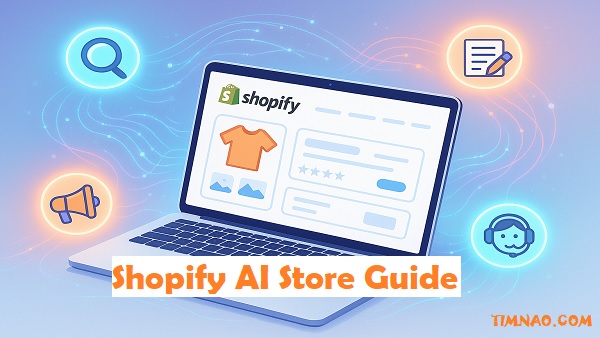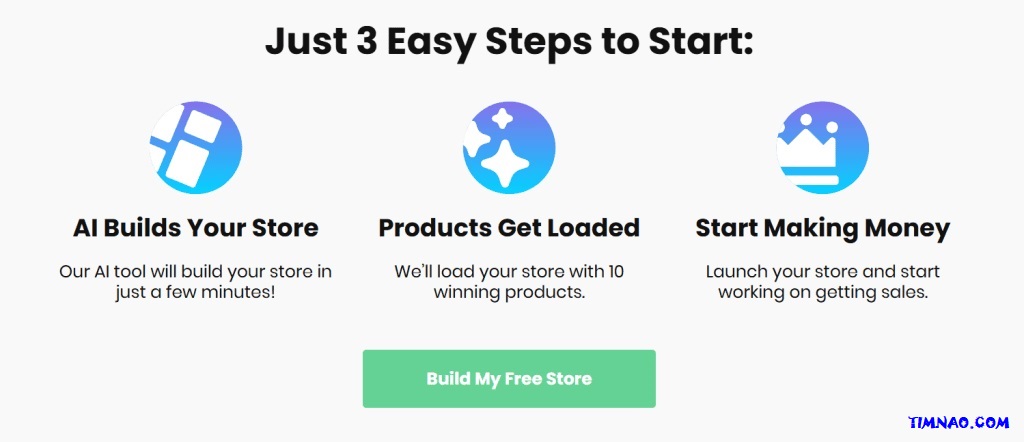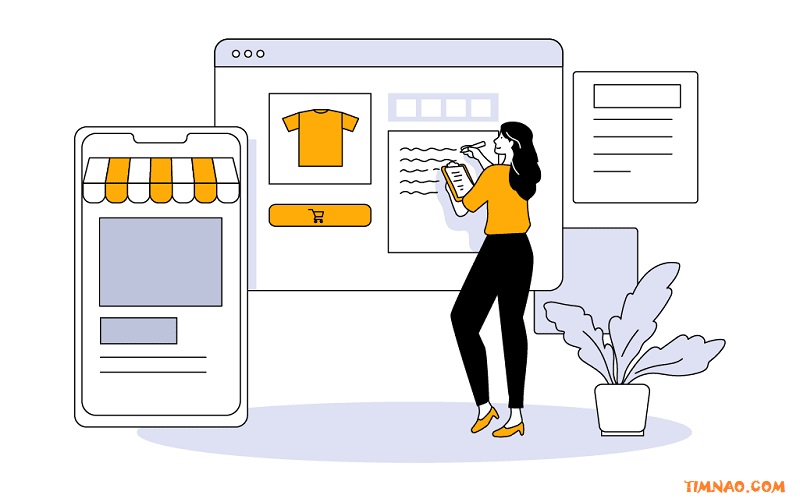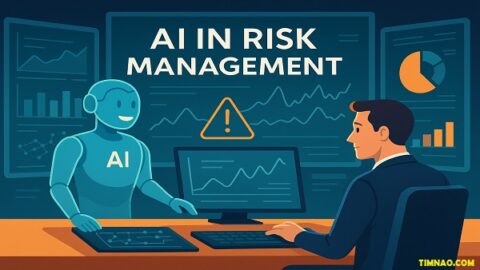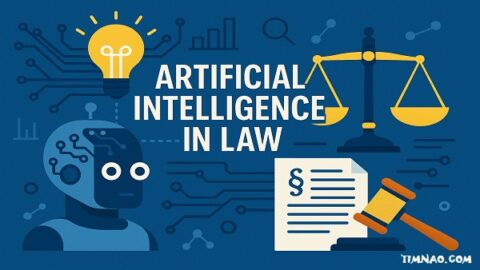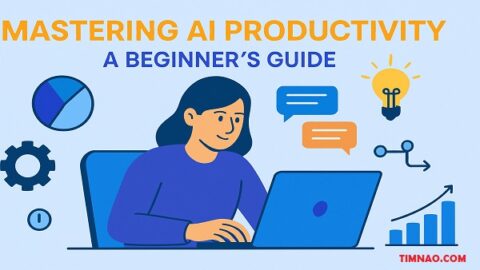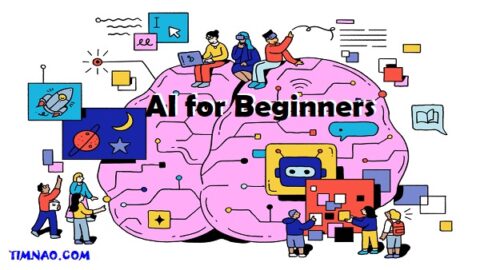🚀 Unlock E-commerce Success: Your Ultimate Guide to Effortlessly Building a Shopify AI Store!
Welcome to the future of online retail! If you’re a beginner dreaming of launching your own e-commerce empire, there’s never been a more exciting time. The rise of Artificial Intelligence (AI) has revolutionized how we approach online business, making it easier and more efficient than ever to create, manage, and scale a Shopify store. This comprehensive guide will walk you through everything you need to know about building your very own Shopify AI store, transforming a potentially daunting task into an empowering journey. Get ready to discover how AI can become your most valuable partner in achieving e-commerce success.
The term Shopify AI store is on the rise, and for good reason. Integrating AI into your e-commerce setup can give you a significant competitive edge, especially when you’re just starting. From identifying profitable niches to crafting compelling product descriptions and even managing customer service, AI tools are here to streamline your operations and boost your creative output.
Table of Contents:
- 🌟 The Dawn of a New E-commerce Era: AI and Your Shopify Venture
- What is a Shopify AI Store?
- Why AI is a Game-Changer for E-commerce Beginners
- Setting Realistic Expectations: AI as Your Powerful Assistant
- 🤔 Laying the Groundwork: Pre-Setup Essentials for Your Shopify AI Store
- Finding Your Profitable Niche with AI-Powered Insights
- Using AI Tools for Market Research
- Analyzing Trends and Competitor Landscapes with AI
- Defining Your Target Audience with AI Precision
- Essential Business Planning: Even AI Needs a Blueprint
- Finding Your Profitable Niche with AI-Powered Insights
- 🛠️ Choosing Your AI Toolkit: The Best AI for Shopify Store Creation in 2025
- Integrated Shopify AI Tools: Exploring Shopify Magic
- One-Click AI Store Builders: Pros, Cons, and Top Picks (e.g., Storebuild.ai)
- Specialized AI Tools for Specific Tasks:
- AI for Product Research (e.g., Sell The Trend, AutoDS)
- AI Logo and Branding Generators (e.g., Brandmark.io)
- AI for Content Creation: Descriptions, Blogs, and More (e.g., ChatGPT, Jasper, Copy.ai)
- AI for Image Generation and Editing (e.g., Midjourney, OnModel)
- 🏗️ Building Your Shopify AI Store: A Step-by-Step Guide for Beginners
- Step 1: Signing Up for Shopify and Initial Setup
- Step 2: Leveraging AI for Store Design and Theme Customization
- AI-Powered Theme Suggestions
- Using AI for Layout Optimization and User Experience
- Step 3: AI-Assisted Product Sourcing and Listing
- Step 4: Setting Up Payments, Shipping, and Legal Pages with AI Guidance
- ✍️ Content is King: Powering Your Store with AI-Generated Copy and SEO
- Crafting SEO-Friendly Product Descriptions that Convert
- Understanding Keywords and Search Intent with AI
- Using AI Writers to Generate and Optimize Descriptions
- AI for Blog Content Creation: Driving Traffic and Engagement
- Generating Blog Post Ideas and Outlines with AI
- Writing and Editing Blog Posts with AI Assistance
- Optimizing Your Entire Store for Search Engines with AI SEO Tools (e.g., Surfer SEO)
- Crafting SEO-Friendly Product Descriptions that Convert
- 🚀 Launching and Marketing Your Shopify AI Store: Reaching Your First Customers
- AI-Driven Marketing Strategies for E-commerce
- Personalized Email Marketing Campaigns with AI (e.g., Klaviyo)
- Creating Engaging Social Media Content and Ads with AI (e.g., Pencil)
- AI for Optimizing Ad Spend and Targeting
- Utilizing AI for Customer Quizzes and Personalized Recommendations (e.g., Octane AI)
- Leveraging AI for Influencer Marketing
- AI-Driven Marketing Strategies for E-commerce
- 🤖 Streamlining Operations: AI for Post-Launch Management and Growth
- AI-Powered Customer Service Solutions
- Smart Inventory Management and Demand Forecasting with AI
- AI for Analytics and Reporting: Understanding Your Store’s Performance (e.g., Conversific, RevTap, Lebesgue AI CMO)
- AI for Fraud Detection and Security
- 🌱 Scaling Your Empire: Advanced AI Strategies and Future Trends
- Hyper-Personalization with AI: The Future of Customer Experience
- Voice Commerce and AI: Preparing for the Next Wave
- Augmented Reality (AR) and Virtual Reality (VR) in E-commerce
- The Evolving Role of AI in Shopify and E-commerce
- ⚖️ Ethical AI in E-commerce: Building a Responsible Shopify AI Store
- Data Privacy and Transparency with AI Tools
- Avoiding Bias in AI Algorithms
- Ensuring Authenticity and Combating Misinformation
- 🎉 Conclusion: Your AI-Powered E-commerce Journey Starts Now!
- Recap of AI Benefits for Your Shopify Store
- Embracing Continuous Learning in the Age of AI
🌟 The Dawn of a New E-commerce Era: AI and Your Shopify Venture
The e-commerce landscape is in a constant state of evolution, and Artificial Intelligence is currently at the forefront of this transformation. For aspiring entrepreneurs and small business owners, AI is not just a buzzword; it’s a powerful suite of tools that can level the playing field, automate tedious tasks, and provide insights that were once only accessible to large corporations. Embarking on your Shopify journey with AI by your side means you’re stepping into a world of enhanced efficiency and innovation from day one.
What is a Shopify AI Store?
At its core, a Shopify AI store is an e-commerce business built on the Shopify platform that strategically utilizes artificial intelligence tools and applications to optimize various aspects of its operations. This doesn’t mean robots are packing your orders (not yet, anyway!). Instead, it refers to leveraging AI for tasks like market research, store design, product sourcing, content creation, marketing, customer service, and analytics. Think of AI as an intelligent layer that enhances your decision-making and automates repetitive processes, allowing you to focus on growth and strategy.
The beauty of an AI-enhanced Shopify store lies in its ability to adapt and learn. Many AI tools can analyze data, identify patterns, and even make predictions, helping you stay ahead of trends and cater more effectively to your customers’ needs. Whether it’s suggesting the perfect product to a Browse customer or optimizing your ad spend for maximum ROI, AI works behind the scenes to make your store smarter and more profitable. This approach is fundamental to a successful AI e-commerce setup.
Why AI is a Game-Changer for E-commerce Beginners
For beginners, the world of e-commerce can seem overwhelming. There are so many hats to wear: marketer, salesperson, customer service rep, content creator, and more. This is where AI truly shines for newcomers. It acts as a force multiplier, allowing you to accomplish more with less, often without needing extensive technical skills or a large team. According to recent industry insights, AI adoption can lead to up to 30% more conversions for Shopify stores using AI-enabled apps.
Imagine generating a dozen unique product descriptions in minutes instead of hours, or having an AI chatbot handle common customer queries while you sleep. AI can help you personalize customer experiences at scale, a task that would be manually intensive. Furthermore, tools like Shopify Magic, Shopify’s own suite of AI features, are increasingly integrated, making these powerful capabilities more accessible than ever for those new to beginner Shopify AI strategies. This allows beginners to compete more effectively and focus on building their brand.
Setting Realistic Expectations: AI as Your Powerful Assistant
While AI offers incredible advantages, it’s crucial to set realistic expectations. AI is an immensely powerful assistant, but it’s not a magic wand that guarantees instant success without effort. It’s a tool—or rather, a collection of tools—that requires your guidance, strategy, and critical thinking. You’ll still need to understand your market, make key business decisions, and inject your unique brand personality into your store.
Think of AI as your intern, co-pilot, or brainstorming partner. It can generate drafts, analyze data, and automate tasks, but the final approval and strategic direction should always come from you. For example, an AI might write a fantastic product description, but you’ll need to ensure it aligns with your brand voice and accurately represents the product. The most successful Shopify AI store owners are those who learn to work with AI, leveraging its strengths while applying their own expertise and creativity.
🤔 Laying the Groundwork: Pre-Setup Essentials for Your Shopify AI Store
Before you even think about AI tools or Shopify themes, a solid foundation is crucial for any successful e-commerce venture. AI can significantly help in this preliminary phase, turning what used to be guesswork into data-driven decision-making. This stage is all about understanding the market, identifying your ideal customer, and planning your business approach – all areas where a Shopify AI store can gain an early advantage.
Finding Your Profitable Niche with AI-Powered Insights
Choosing the right niche is one of the most critical decisions you’ll make. A niche that’s too broad can make it hard to stand out, while one that’s too narrow might limit your customer base. AI can help you navigate this complex decision by analyzing vast amounts of data to identify emerging trends, underserved markets, and potential product opportunities. This is a key step in your AI e-commerce setup.
- Using AI Tools for Market Research:Several AI-powered market research tools can sift through social media trends, search engine queries, customer reviews, and competitor data to provide you with actionable insights. Tools can analyze market demand, potential profitability, and the competitive landscape for various niches. For instance, AI can identify “pain points” in customer reviews of existing products, revealing gaps you could fill. Shopify’s blog itself offers guidance on finding products, and AI can supercharge these methods by analyzing data at a scale humans can’t match. Some AI product research tools also integrate with platforms like Sell The Trend to give you an edge.
- Analyzing Trends and Competitor Landscapes with AI:AI excels at pattern recognition. It can analyze historical data and current discussions online to predict upcoming trends with surprising accuracy. Furthermore, AI tools can perform in-depth competitor analysis, identifying their strengths, weaknesses, pricing strategies, and customer sentiment. This information is invaluable for carving out your unique selling proposition (USP) and positioning your beginner Shopify AI store for success. For example, AI can track mentions of specific product types or brands across social media and news sites to gauge rising interest.
Defining Your Target Audience with AI Precision
Once you have a niche, understanding your ideal customer is paramount. AI can help you create detailed customer personas by analyzing demographic data, psychographic information (interests, values, lifestyles), and online behavior. This goes beyond basic age and gender demographics to understand their motivations, buying triggers, and preferred communication channels.
AI tools can segment potential customers based on their online footprint, helping you tailor your marketing messages and product offerings more effectively. For example, AI might identify that a segment of your potential audience for eco-friendly products is highly active on Instagram and responds well to user-generated content. This insight directly informs your content and marketing strategy for your Shopify AI store.
Essential Business Planning: Even AI Needs a Blueprint
Even with the power of AI, a solid business plan remains essential. This doesn’t need to be a hundred-page document, but it should outline your business goals, strategies, budget, and key performance indicators (KPIs). AI can assist in this process by helping you forecast sales, estimate startup costs, and even identify potential risks.
Your business plan will serve as your roadmap, guiding your decisions as you build and grow your AI e-commerce setup. It will also help you measure your progress and make necessary adjustments along the way. Consider using AI to research industry benchmarks for conversion rates or average order values in your chosen niche to set realistic targets.
🛠️ Choosing Your AI Toolkit: The Best AI for Shopify Store Creation in 2025
With your foundational planning complete, it’s time to explore the exciting world of AI tools that can help you build your Shopify AI store. The market is brimming with options, from comprehensive platforms to specialized apps, each designed to simplify different aspects of e-commerce. For a beginner Shopify AI user, selecting the right mix of tools is key to an efficient and effective store creation process.
Integrated Shopify AI Tools: Exploring Shopify Magic
Shopify itself has been heavily investing in AI, offering a suite of features collectively known as Shopify Magic. These tools are designed to integrate seamlessly into your Shopify admin, making them incredibly accessible. Shopify Magic can assist with a variety of tasks, including:
- Automated Product Descriptions: Generate engaging and SEO-friendly product descriptions quickly.
- Email Marketing Content: Craft subject lines and body copy for your email campaigns.
- Instant Answers for Customer Queries: Help set up automated responses for frequently asked questions.
- Blog Post Ideas and Content: Generate outlines or even draft blog content to drive traffic.
The main advantage of using Shopify Magic is its native integration, which ensures smooth operation and a consistent user experience within your Shopify dashboard. As Shopify continues to develop these AI features, they are becoming increasingly powerful for any AI e-commerce setup.
One-Click AI Store Builders: Pros, Cons, and Top Picks
For those looking for an incredibly fast way to get started, one-click AI store builders like Storebuild.ai (often associated with platforms like Zendrop) promise to create a fully functional Shopify store in minutes. These platforms typically ask a few questions about your niche and preferences, and then AI takes over to design the store, select products (often for dropshipping), and set up basic configurations.
- Pros: Extremely fast setup, minimal technical skill required, can be a good starting point for absolute beginners.
- Cons: Less customization and control, designs might be generic, product selection might need significant vetting. You still need to personalize and optimize the store heavily.
- Consideration: While tempting, remember that a store built in minutes still needs your unique touch, branding, and strategic input to truly succeed. Use these as a launchpad, not a final solution.
Specialized AI Tools for Specific Tasks:
Beyond integrated solutions and one-click builders, a vast ecosystem of specialized AI tools can enhance specific parts of your Shopify AI store creation:
- AI for Product Research:Tools like Sell The Trend and AutoDS use AI to analyze market data from platforms like AliExpress and Amazon to identify trending products, reliable suppliers, and potential profit margins. They can save countless hours of manual research. Many dropshipping apps now incorporate AI to help you find and import products suitable for your beginner Shopify AI store.
- AI Logo and Branding Generators:Creating a professional brand identity is crucial. AI-powered logo makers like Brandmark.io or services available on platforms like Canva can generate logo ideas, color palettes, and even suggest brand guidelines based on your input. This can be a cost-effective way to get a decent logo when starting out.
- AI for Content Creation: Descriptions, Blogs, and More:This is one of the most impactful areas for AI. Tools like ChatGPT, Jasper, and Copy.ai can generate high-quality text for product descriptions, blog posts, ad copy, email newsletters, and social media updates. They can adapt to different tones and styles, and many offer templates specifically for e-commerce. Remember to always review and personalize AI-generated content to ensure it aligns with your brand voice and values.
- AI for Image Generation and Editing:Visuals are critical in e-commerce. AI tools like Midjourney, DALL-E (accessible via ChatGPT Plus), or Adobe Firefly can create unique images from text prompts, which can be useful for blog post headers, social media graphics, or even conceptual product visuals. Other AI tools can help with image editing, such as background removal, upscaling, or even generating model photos for your apparel products (like OnModel, mentioned in search results as a Shopify app). This can save significant costs on photography and graphic design for your AI e-commerce setup.
When selecting your AI toolkit, consider your specific needs, budget, and technical comfort level. Often, a combination of Shopify’s native tools and a few carefully chosen specialized apps provides the best balance for a new Shopify AI store.
🏗️ Building Your Shopify AI Store: A Step-by-Step Guide for Beginners
With your foundational plans and AI toolkit choices in mind, it’s time for the exciting part: actually building your Shopify AI store. This step-by-step guide is designed for beginners, showing you how AI can assist at each stage of the process, making your AI e-commerce setup smoother and more efficient.
Step 1: Signing Up for Shopify and Initial Setup
This is the fundamental first step. Head over to the Shopify website and sign up for a free trial. You’ll need to choose a store name (AI can even help you brainstorm ideas if you’re stuck!) and answer some basic questions about your business.
- AI Assistance: While this step is mostly manual, if you’re unsure about your store name, you can use AI content generators like ChatGPT to brainstorm catchy and available names based on your niche and brand concept. Some business name generators also use AI.
- Domain Name: Shopify will provide you with a default
myshopify.comdomain, but you’ll want to purchase a custom domain name for a professional look.
Step 2: Leveraging AI for Store Design and Theme Customization
Your store’s design is crucial for creating a good first impression and providing a positive user experience. Shopify offers a variety of free and paid themes. AI can help you choose and customize your theme effectively.
- AI-Powered Theme Suggestions: Some AI tools or consultants might analyze your niche, target audience, and brand identity to suggest suitable Shopify themes. While direct AI theme suggestion within Shopify is still evolving, you can use AI to research design best practices for your industry.
- Using AI for Layout Optimization and User Experience (UX): While direct AI-driven layout changes within Shopify’s theme editor are limited, you can use AI principles for UX. For example, AI analytics tools (once your store is live) can identify user drop-off points on pages, suggesting areas for redesign. Some page builder apps available on the Shopify App Store, like GemPages or Shogun, are incorporating AI to help design high-converting landing pages. You can also use AI content tools to write compelling microcopy for buttons and navigation menus.
Step 3: AI-Assisted Product Sourcing and Listing
This is where AI can save an enormous amount of time for your beginner Shopify AI store, especially if you’re considering dropshipping.
- Finding Trending Products with AI Dropshipping Tools:Apps like DSers (primarily for AliExpress), Spocket (focusing on US/EU suppliers), Zendrop, or AutoDS use AI to scan vast marketplaces for trending products, analyze supplier reliability, and predict demand. They often allow one-click product imports into your Shopify store. These tools are invaluable for quickly populating your store with potentially high-demand items.
- Crafting Compelling Product Pages with AI:Once you have products, you need persuasive product pages. This involves more than just descriptions.
- AI-Generated Product Descriptions: Use tools like Shopify Magic, Jasper, or Yodel (an AI copywriting tool focused on Shopify needs mentioned in search results) to create unique, engaging, and SEO-friendly product descriptions. Provide the AI with key features and benefits, and let it generate compelling copy. Always review and tweak for brand voice.
- AI for Product Titles & Meta Descriptions: AI can also help craft optimized titles and meta descriptions that improve click-through rates from search results.
- Page Layout with AI Page Builders: Apps like PagePilot are specifically designed to use AI to create high-converting product pages, helping with structure, calls to action, and trust signals.
- Generating High-Quality Product Images with AI:If you have unique products or need lifestyle imagery, AI image generators (Midjourney, DALL-E) can create unique visuals. For existing product photos, AI editing tools can remove backgrounds, enhance quality, or even place your product in different settings. Some apps, like OnModel (mentioned in search results), allow you to generate diverse model photos for apparel without actual photoshoots.
Step 4: Setting Up Payments, Shipping, and Legal Pages with AI Guidance
These are crucial operational aspects of your Shopify AI store.
- Payments: Shopify Payments is the easiest way to start accepting payments, but you can also integrate other payment gateways.
- Shipping: Configure your shipping zones, rates, and methods. AI might not directly set these up, but AI-powered logistics tools (more relevant for scaling) can optimize shipping routes and costs later on.
- Legal Pages (Privacy Policy, Terms of Service, Refund Policy): Shopify provides basic templates for these pages. However, you can use AI writing tools, with careful review, to help customize these or generate more comprehensive drafts. It is highly recommended to have these reviewed by a legal professional, but AI can provide a solid starting point, especially for a beginner Shopify AI user. Some AI tools are specifically trained to help draft legal-compliant text, but always double-check their output for your specific jurisdiction and business model.
Building your store is an iterative process. Use AI to get you 80-90% of the way there for many tasks, then add your human touch to refine and perfect.
✍️ Content is King: Powering Your Store with AI-Generated Copy and SEO
In the digital marketplace, content isn’t just king; it’s the entire kingdom. For your Shopify AI store to attract visitors and convert them into customers, you need compelling, informative, and search-engine-optimized content across your site. AI offers revolutionary tools to help beginners create high-quality content efficiently, a cornerstone of any successful AI e-commerce setup.
Crafting SEO-Friendly Product Descriptions that Convert
Your product descriptions are your 24/7 salespeople. They need to be persuasive, highlight benefits, address potential customer concerns, and be optimized for search engines so people can find them.
- Understanding Keywords and Search Intent with AI:Before writing, you need to know what terms your potential customers are searching for. AI-powered SEO tools can help identify relevant keywords, analyze their search volume and competition, and understand the “search intent” (e.g., are they looking to learn, compare, or buy?). Tools like Semrush or Ahrefs have AI features, and dedicated AI SEO tools are also emerging.
- Using AI Writers to Generate and Optimize Descriptions:This is where AI truly accelerates your beginner Shopify AI workflow. Tools like Shopify Magic, Jasper, Copy.ai, or specialized Shopify apps like Yodel can take your product features and target keywords and generate multiple description options. You can then choose the best one or combine elements, ensuring you personalize it to match your brand voice. These tools can often incorporate SEO best practices directly into the generated text.
AI for Blog Content Creation: Driving Traffic and Engagement
A blog is a powerful tool for attracting organic traffic, establishing your brand as an authority, and engaging with your audience. However, consistent blog content creation can be time-consuming.
- Generating Blog Post Ideas and Outlines with AI:Stuck for ideas? AI tools can analyze trends in your niche, your existing content, and competitor blogs to suggest relevant blog topics. They can also generate detailed outlines, including headings and subheadings, to structure your posts effectively. Shopify Magic and tools like ChatGPT are excellent for this.
- Writing and Editing Blog Posts with AI Assistance:AI can draft entire blog posts based on your outline and keywords. While AI-generated drafts require editing for accuracy, tone, and originality, they provide a massive head start. Many AI writing tools also include grammar checking and style suggestions, acting as an AI editing assistant. This allows you to publish more frequently and consistently for your Shopify AI store.
Optimizing Your Entire Store for Search Engines with AI SEO Tools
SEO isn’t just about product descriptions and blog posts; it’s about optimizing your entire store – from site structure and page load speed to image alt text and internal linking.
- On-Page SEO Analysis: AI SEO tools like Surfer SEO or MarketMuse can analyze your existing pages and compare them to top-ranking competitors, providing actionable recommendations for improvement. This might include keyword density, content length, readability, and the inclusion of related terms.
- Technical SEO Insights: Some AI tools can help identify technical SEO issues that might be hindering your site’s performance, such as broken links or slow-loading pages.
- Content Strategy: AI can analyze search trends and your current content gaps to help you build a comprehensive SEO content strategy, ensuring you’re covering topics your audience cares about. Statistics show that 35% of businesses use AI to develop SEO-focused content strategies, and 84% of marketers believe in using AI for SEO by aligning web content with user search intent.
By strategically using AI for content creation and SEO, even as a beginner Shopify AI user, you can create a store that not only looks great but also ranks well in search results, driving valuable organic traffic to your AI e-commerce setup. Remember, the key is to use AI as a powerful assistant, always adding your human oversight and creativity to ensure authenticity and quality.
🚀 Launching and Marketing Your Shopify AI Store: Reaching Your First Customers
Building a stunning Shopify AI store with amazing products is only half the battle. Now, you need to get the word out and attract your first customers. Marketing can be a daunting task for beginners, but AI offers a suite of powerful tools to make your marketing efforts more targeted, efficient, and effective. This is a critical phase for your AI e-commerce setup to start generating revenue.
AI-Driven Marketing Strategies for E-commerce
AI can analyze customer data, market trends, and campaign performance to help you create smarter, more personalized marketing strategies. This allows even a beginner Shopify AI entrepreneur to compete with more established businesses.
- Personalized Email Marketing Campaigns with AI:Email marketing remains one of the most effective channels for e-commerce. AI tools, such as those integrated into platforms like Klaviyo (which has Klaviyo AI features) or Mailchimp, can help you:* Segment your audience: AI can analyze customer behavior (purchase history, Browse patterns) to create highly specific segments.* Personalize content: Generate personalized subject lines, email copy, and product recommendations for each segment. Some AIs predict the best time to send emails for maximum engagement.
* Automate workflows: Set up automated email sequences for abandoned carts, welcome series, and post-purchase follow-ups, all optimized by AI insights.
- Creating Engaging Social Media Content and Ads with AI:Social media is key for brand building and customer acquisition. AI can help you:* Generate content ideas: Suggest trending topics, hashtags, and content formats for platforms like Instagram, Facebook, and TikTok.* Write captions and ad copy: Tools like Jasper or Pencil (an AI ad creation tool mentioned in search results) can craft compelling social media posts and ad creatives.
* Create visuals: AI image and video generators can produce eye-catching graphics and short videos for your social feeds and ads. Pencil, for instance, can produce video and static ads by plugging in your Shopify store details.
* Schedule posts: While not always AI-driven, many scheduling tools integrate with content creation AIs.
- AI for Optimizing Ad Spend and Targeting:Running paid advertising campaigns (e.g., Google Ads, Facebook Ads) can be expensive if not managed properly. AI can:* Optimize bids: Automatically adjust your bids in real-time to maximize ROI.* Improve targeting: Identify the most profitable audience segments to target with your ads based on vast datasets.
* A/B test creatives: Help you test different ad creatives and copy to see what resonates best with your audience.
Many advertising platforms now have built-in AI features to assist with campaign optimization.
Utilizing AI for Customer Quizzes and Personalized Recommendations
Interactive content like quizzes can be a fun way to engage customers and gather valuable data. AI-powered tools like Octane AI allow you to create quizzes that, based on customer answers, provide personalized product recommendations. This not only enhances the shopping experience but also increases conversion rates and average order value1 for your Shopify AI store. These tools often integrate with email marketing platforms to further personalize communication.
Leveraging AI for Influencer Marketing
Influencer marketing can be a powerful strategy, but finding the right influencers can be time-consuming. AI tools are emerging that can analyze influencer profiles, audience demographics, engagement rates, and brand alignment to help you identify suitable partners for your AI e-commerce setup. These tools can also help detect fake followers or engagement, ensuring you invest your marketing budget wisely.
By embracing these AI-driven marketing techniques, you can launch your Shopify AI store with a strong, data-backed strategy, reaching your target audience more effectively and efficiently than ever before. Remember to monitor your results and let the AI (and your own analysis) guide ongoing optimizations.
🤖 Streamlining Operations: AI for Post-Launch Management and Growth
Congratulations on launching your Shopify AI store! But the journey doesn’t end here. Managing and growing an e-commerce business involves ongoing operational tasks. AI can continue to be your indispensable partner, helping you streamline these processes, improve customer satisfaction, and make data-driven decisions for sustainable growth. This is where the efficiency of your AI e-commerce setup truly pays off.
AI-Powered Customer Service Solutions
Providing excellent customer service is key to building loyalty and positive word-of-mouth. AI can significantly enhance your customer support capabilities, especially for a beginner Shopify AI entrepreneur who might be handling support solo.
- Implementing AI Chatbots for 24/7 Support:AI-powered chatbots like Tidio (which offers a Lyro AI chatbot), Gorgias, or Shopify Inbox with its AI features can handle a large volume of common customer inquiries 24/7. They can answer FAQs, track orders, provide product information, and even guide users through the checkout process. This frees up your time to handle more complex issues and ensures customers get instant responses. Many AI chatbots can handle up to 70% of customer inquiries automatically.
- Using AI for Sentiment Analysis and Customer Feedback:AI tools can analyze customer reviews, social media comments, and support chat logs to gauge customer sentiment (positive, negative, neutral). This helps you quickly identify areas for improvement in your products or services and address customer concerns proactively. Understanding sentiment is crucial for maintaining a healthy brand reputation for your Shopify AI store.
Smart Inventory Management and Demand Forecasting with AI
Managing inventory effectively is crucial to avoid stockouts (lost sales) or overstocking (tied-up capital). AI can bring a new level of intelligence to this area.
- Demand Forecasting: AI algorithms can analyze historical sales data, seasonality, current trends, and even external factors (like holidays or upcoming promotions) to predict future demand for your products with greater accuracy.
- Automated Reordering: Based on demand forecasts and current stock levels, some AI tools can suggest optimal reorder points or even automate the reordering process with your suppliers. Apps like Stock Sync or Prisync (which also does repricing) were mentioned in search results in this context. This helps ensure you have the right products in stock at the right time.
AI for Analytics and Reporting: Understanding Your Store’s Performance
To grow your AI e-commerce setup, you need to understand what’s working and what’s not. AI-powered analytics tools can provide deeper insights than standard reporting.
- Actionable Insights: Tools like Conversific, RevTap, Lebesgue AI CMO, or even Shopify’s own analytics enhanced with AI can go beyond basic metrics. They can identify key trends, customer segments driving the most revenue, and opportunities for optimization. For example, an AI might highlight that customers who buy product A are highly likely to buy product B within two weeks.
- Predictive Analytics: Some AI tools can forecast future sales, customer lifetime value (CLV), and even churn risk, allowing you to take proactive measures.
- Custom Reports: AI can help generate custom reports tailored to your specific questions without needing complex data manipulation skills. Platforms like Coefficient allow automated Shopify data into spreadsheets, which can then be analyzed with AI insights.
AI for Fraud Detection and Security
As your Shopify AI store grows, so does the risk of fraudulent transactions. Shopify has robust built-in fraud analysis, and many payment gateways also offer AI-powered fraud detection. These systems analyze transaction patterns, IP addresses, and other data points in real-time to flag suspicious orders, protecting your business from chargebacks and losses.
By integrating AI into your post-launch operations, you can run a more efficient, customer-focused, and data-driven business. This allows even a beginner Shopify AI owner to manage growth effectively and focus on strategic initiatives rather than getting bogged down in repetitive daily tasks.
🌱 Scaling Your Empire: Advanced AI Strategies and Future Trends
Once your Shopify AI store is established and running smoothly, you can start exploring more advanced AI strategies to scale your e-commerce empire. The world of AI is constantly evolving, and staying ahead of future trends will give you a significant competitive advantage in your AI e-commerce setup. These strategies are about taking your business from a functional store to a market leader.
Hyper-Personalization with AI: The Future of Customer Experience
Generic marketing messages and one-size-fits-all shopping experiences are rapidly becoming obsolete. Hyper-personalization, powered by AI, is the future. This means tailoring every touchpoint of the customer journey – from website content and product recommendations to email marketing and even ad creatives – to the individual preferences and behaviors of each customer.
- Dynamic Content: AI can dynamically change website content, banners, and offers based on who is visiting your Shopify AI store.
- Predictive Recommendations: AI algorithms can analyze vast amounts of customer data (Browse history, purchase patterns, wish lists, demographic information) to predict what a customer might want to buy next, even before they realize it themselves. Amazon’s recommendation engine, which drives a significant portion of its sales, is a prime example.
- Personalized Journeys: AI can guide customers through personalized pathways on your site, showing them the most relevant products and content at each step. McKinsey reports that personalization can drive a 10-15% sales lift.
Voice Commerce and AI: Preparing for the Next Wave
Voice assistants like Alexa, Google Assistant, and Siri are becoming increasingly integrated into our lives. Voice commerce (v-commerce) – shopping using voice commands – is a rapidly growing trend. Purchases made through voice assistants are estimated to grow significantly, potentially reaching $164 billion by 2025.
- Optimizing for Voice Search: Ensure your product information and store content are optimized for natural language voice queries.
- AI-Powered Voice Assistants: In the future, AI-powered voice assistants integrated directly into your Shopify AI store could help customers find products, ask questions, and even place orders using their voice.
Augmented Reality (AR) and Virtual Reality (VR) in E-commerce
AR and VR technologies, often enhanced by AI, are set to revolutionize how customers interact with products online.
- AR “Try-Before-You-Buy”: AR apps allow customers to virtually try on clothes, see how furniture would look in their homes, or test out makeup products. Shopify already supports 3D models and AR features for product viewing.
- Immersive VR Shopping Experiences: VR could create virtual storefronts where customers can browse and interact with products in a simulated 3D environment.
- AI in AR/VR: AI can personalize these AR/VR experiences, for example, by suggesting products to “try on” based on past purchases or style preferences.
The Evolving Role of AI in Shopify and E-commerce
AI is not a static technology; it’s continuously learning and improving. We can expect to see even more sophisticated AI tools and features becoming available for Shopify AI store owners. This includes more advanced analytics, more intuitive AI-powered design tools, and even AI that can autonomously manage larger aspects of the business. The global AI content marketing industry is expected to grow substantially, reaching $17.6 billion by 2033. Keeping an eye on platforms like Shopify’s own announcements and industry publications will be key for any beginner Shopify AI entrepreneur looking to scale.
By embracing these advanced strategies and keeping an eye on future trends, you can ensure your AI e-commerce setup remains competitive, innovative, and poised for long-term growth.
⚖️ Ethical AI in E-commerce: Building a Responsible Shopify AI Store
As we embrace the incredible power of Artificial Intelligence in building and managing our Shopify AI store, it’s crucial to consider the ethical implications. Using AI responsibly not only builds trust with your customers but also contributes to a healthier and fairer e-commerce ecosystem. For any AI e-commerce setup, ethical considerations should be integral from the outset, especially for a beginner Shopify AI user learning the ropes.
Data Privacy and Transparency with AI Tools
AI thrives on data. Many AI tools collect and analyze customer data to provide personalized experiences, predict trends, and optimize marketing efforts. It’s your responsibility to handle this data ethically.
- Transparency: Be clear with your customers about what data you are collecting and how you are using it, especially when AI is involved in decision-making (e.g., personalized recommendations). Update your privacy policy to reflect your use of AI tools.
- Consent: Ensure you have proper consent for data collection and usage, adhering to regulations like GDPR, CCPA, or other local laws.
- Security: Protect customer data from breaches. Choose AI tools from reputable vendors who prioritize data security. Shopify itself maintains high security standards, but any third-party apps you integrate should also be vetted.
Avoiding Bias in AI Algorithms
AI algorithms are trained on data, and if that data contains biases (e.g., historical biases in purchasing patterns or societal biases), the AI can perpetuate or even amplify them. This could lead to unfair treatment of certain customer groups or skewed recommendations.
- Awareness: Be aware that AI bias is a real issue. Question the outputs of your AI tools. For example, if an AI consistently recommends products only to a specific demographic, investigate why.
- Diverse Data: While you may not control the training data of third-party AI tools, support and choose tools from companies that are actively working to mitigate bias.
- Human Oversight: Regularly review AI-driven decisions and outcomes to ensure fairness and correct any biases you identify in your Shopify AI store operations.
Ensuring Authenticity and Combating Misinformation
With AI’s ability to generate realistic text, images, and even videos, there’s a potential for misuse, such as creating fake reviews or misleading product representations.
- Authentic Content: While AI can help generate content, ensure it is accurate, truthful, and genuinely reflects your products and brand. Always review and edit AI-generated content.
- Customer Reviews: Use legitimate review collection methods. AI can help manage and analyze reviews (e.g., Loox for photo reviews, as mentioned in search results), but avoid using AI to generate fake positive reviews – this erodes trust and can have legal consequences.
- Clear Disclosure (When Appropriate): Consider if and when it’s appropriate to disclose the use of AI in customer interactions (e.g., “You are chatting with an AI assistant”). Some customers appreciate this transparency.
Recent discussions (as noted in search results from April 2025) around platforms like Shopify and the ethical use of AI, particularly concerning the content sold by vendors, highlight the importance of platform responsibility and vendor vigilance. While Shopify works to ensure its platform is used ethically, as a store owner, you are also responsible for the ethical application of AI within your own AI e-commerce setup. Building a successful and sustainable beginner Shopify AI business means building it on a foundation of trust and ethical practices.
🎉 Conclusion: Your AI-Powered E-commerce Journey Starts Now!
You’ve journeyed through the essentials of creating and supercharging your very own Shopify AI store. From laying the initial groundwork with AI-driven niche research to building, marketing, and scaling your operations with intelligent tools, it’s clear that Artificial Intelligence is no longer a far-fetched concept but a tangible, accessible, and incredibly powerful ally for e-commerce entrepreneurs, especially beginners. Your AI e-commerce setup is poised to transform your business aspirations into reality.
Recap of AI Benefits for Your Shopify Store
Let’s quickly revisit the transformative advantages AI brings to your beginner Shopify AI venture:
- Efficiency and Automation: AI automates repetitive tasks like writing product descriptions, managing customer inquiries, and analyzing data, freeing up your valuable time to focus on strategy and growth.
- Enhanced Creativity: AI tools for content generation, logo design, and image creation can act as your creative assistants, helping you produce high-quality assets even with limited resources.
- Data-Driven Decisions: AI provides deep insights into market trends, customer behavior, and store performance, enabling you to make smarter, more informed decisions.
- Personalization at Scale: Deliver tailored experiences to your customers, from personalized product recommendations to targeted marketing messages, fostering loyalty and increasing conversions.
- Competitive Edge: Leverage AI to operate more efficiently, market more effectively, and innovate faster, allowing you to compete even as a newcomer in the bustling e-commerce landscape.
Embracing Continuous Learning in the Age of AI
The world of AI and e-commerce is dynamic. New tools, techniques, and trends are emerging constantly. The key to long-term success with your Shopify AI store is to embrace a mindset of continuous learning. Stay curious, experiment with new AI applications, and adapt your strategies as the technology evolves. Follow industry blogs, join e-commerce communities, and don’t be afraid to explore how the latest AI advancements can benefit your business.
The journey of building an online store is exciting, and with AI as your co-pilot, it’s more accessible and promising than ever. Take the knowledge and tools outlined in this guide, infuse them with your unique passion and vision, and start building the e-commerce business of your dreams. Your AI-powered Shopify adventure is just beginning!
Reference video:

